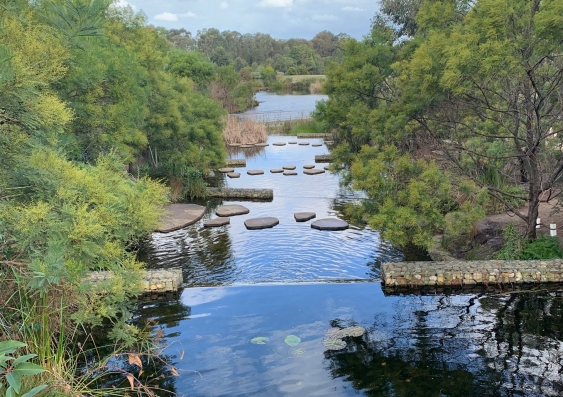Testing the waters: local communities engage with sustainable water practices
Engaging communities on water quality testing and stormwater management promotes cultural ownership and investment in sustainable water practices.
Engaging communities on water quality testing and stormwater management promotes cultural ownership and investment in sustainable water practices.

Nadia Razzhigaeva
ª π⁄≤ ∆± Arts Design & Architecture News & Content Coordinator
02 9348 1229
n.razzhigaeva@unsw.edu.au
A team of ª π⁄≤ ∆± social scientists and water engineers is working with local communities to maintain the health of their waterways. The project will build community knowledge of local stormwater management systems, such as wetlands, and water quality testing.
ª π⁄≤ ∆± is partnering with Riverwood Community Centre in Canterbury Bankstown and Georges Riverkeeper through the Georges River Combined Councils‚Äô Committee for the research.
The project, funded by Sydney Water, will aim at developing a community engagement model for local councils to improve community water knowledge and promote meaningful long-term connections with water.
‚ÄúThe research addresses some of the disconnections between communities, water authorities and local water infrastructure,‚Äù says project lead Dr Marilu Melo Zurita from ª π⁄≤ ∆±‚Äôs Faculty of Arts, Design & Architecture.
The Salt Pan Creek Wetlands in Riverwood, for example, support diverse local activities, including one of the largest community gardens in New South Wales.
“The wetlands are the centrepiece of the community’s engagement and recreational activities for families, yet awareness of how they connect to the wider water system and its purpose has not been explored,” Dr Melo Zurita says.
“The project will develop water literacy within this community group with a strong track-record of green initiatives to show the value of connecting water infrastructure to people.”
Wetlands are an example of Water Sensitive Urban Design (WSUD), an area of research interest for Dr Melo Zurita. WSUD technologies remove stormwater pollution before it reaches our waterways, repurposing nutrients for vegetation and enabling potential for treated stormwater reuse. They mimic the natural water cycle where possible to better protect the local environment and waterways.
“You might have gone for a walk around some WSUD technologies. If you've been to Sydney Park, you probably have seen extensive wetlands and enjoyed them. They're quite beautiful: the water flows, there's bird life, there's a lot of vegetation growing around it,” the human geographer and social scientist says.
Read more:¬Ý
“Sometimes we just walk along these paths, and we just don't fully appreciate what is involved in keeping them going… These water systems actually perform a function in the urban space for water, in terms of cleaning water, making it flow.”
Dr Melo Zurita,¬Ý, a Senior Research Associate at the , and Ms Nabila Namira, an undergraduate research student at ª π⁄≤ ∆±, are working with the Riverwood Community Centre to monitor and test the wetland water quality. ‚ÄúThese measurements can help us understand what the system does for example, when there is rain, when there are periods of drought,‚Äù Dr Melo Zurita says.
Engaging with different groups helps establish these systems as part of our lives, she says. “This will create legacy knowledge on water challenges for the local populace and promote further community self-education beyond this project.”
The project will also deliver community-led sessions, develop new wetlands signage and community participation activities, such as community-guided tours, to promote that sense of community ownership.
“Projects like this show the true value in interdisciplinary research to promote sustainable water practices for the future,” says Dr Prodanovic. “For an engineer, it is important to design and construct infrastructure to complement and support local community. Green and blue spaces that WSUD technologies provide could provide even more benefits with involvement of local community knowledge and sense of ownership over these spaces.”
Read more:¬Ý
The project methodology will be shared through the Georges Riverkeeper, City of Canterbury Bankstown and Sydney Water networks to promote future community engagement in line with Sydney Water’s water literacy and advocacy program.
This is one of six community projects recognised by Sydney Water’s Community Grants program, and allocated $10,000 for i